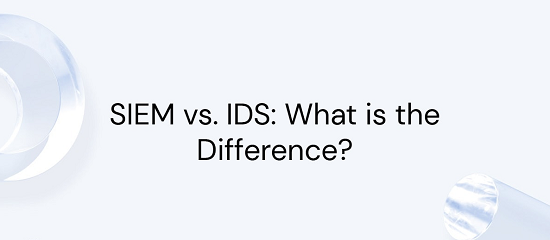In the past, Internet users weren't concerned much about cybersecurity. They trust each other enough that they freely share information with everyone. Nobody tries to infiltrate someone's network. However, when the whole population got into it, things became different. Viruses and malware crop up, and security measures have to be implemented. This scenario leads to the development of SIEM (Security Information and Event Management) and IDS (Intrusion Detection Systems). SIEM vs IDS Their job is to notify administrators of any malicious activity and stop them from causing damage. The first few attacks were tolerable, taking advantage only of glaring software vulnerabilities.
SIEM security teams can quickly fix them, and firewalls are finely blocking hostile addresses and limiting access. SIEM vs IDS Nevertheless, when big enterprises moved into the Web, cybercrimes became rampant. After all, there's a lot of money at stake here. Since then, people have constantly looked for ways to penetrate security systems. To keep up with the situation, cybersecurity experts improved threat protection. Developers created software that can give you a complete picture of the network's activity. This way, you can monitor suspicious patterns and find threats first before they take you down. To understand the difference between IDS and SIEM, continue reading this article.
SIEM vs IDS And WHAT IS SECURITY INFORMATION AND EVENT MANAGEMENT (SIEM)?
IT staff use this software application to determine potential attacks before or while they happen. It translates to faster response times to prevent incidents from worsening. It provides IT, people, a centralized view on all records of events. Without this, your staff won't see critical events in your systems, which causes backlogs and late investigation of incidents.
Here are some of the primary objectives of the SIEM interface:
- Collects data about events and manage them
- Examining log events and data sources
- Operational capabilities which include incident management and reporting
- Compliance
- Threat detection response

A SIEM solution aggregates data from network devices, servers, and more. They analyze data activities to discover trends, spot new threats and instruct security teams to study the severity of alerts.
It is a centralized security event log system that reviews records from various data streams. As data gets categorized and makes it more accessible, you can get to the bottom of the problem with as much detail as necessary.
What is Intrusion Detection System (IDS)?
Moving on in our SIEM vs. IDS guide, we'll now study the latter.
IDS software is a passive tool that can merely determine attacks. It does not have the power to prevent or stop an attack from getting into your system. IDS tools can highlight suspicious activity through any of these methods:
SIEM vs IDS Signature-based Detection:
Using this approach, SIEM vs IDS uncovers attacks by studying particular patterns in network traffic or through "signatures" of previously detected malware. The term signature came from legacy antivirus software that considers malicious instruction sequences as signatures.
Signature-based SIEM vs IDS works seamlessly to find cyber attacks, yet it has difficulties fighting against novel security threats.
SIEM vs IDS Anomaly-based Detection:
This siem vs ids method detect intrusions and misuse by categorizing activities as usual or malicious. IDS with anomaly-based detection was designed to expose unknown attacks at the height of the rapid emergence of new types of malware.
Through machine learning, SIEM vs IDS has created a model of reliable activity and correlates it with new behavior to the baseline. When there is inconsistency, the security operations center or SOC will be alerted.
Since these models are trainable, they can protect your network and its properties better than signature-based IDS. However, they may detect some false positives along the way.
SIEM vs IDS Reputation-based Detection:
Identifies possible security incidents through their reputation scores. Reputation-based detection is applied on executable files, batch files, and other file formats prone to carrying unsafe codes.
It consolidates and monitors several file attributes and analyzes them within a reputation engine using algorithms and statistical analysis.
SIEM vs. IDS: Should They Work Together?
Using SIEM alongside IDS can help network enterprises spot and prevent unauthorized access or control of critical data. The IDS tool can discover a suspicious activity or an abnormal event and deliver it to the SIEM for analysis. From there, they will find out if the data is a threat to the network or not.
It would be best to use IDS and SIEM vs IDS to get several layers of protection for your network. Adding endpoint detection and response can also help to expand detection and response capacity.
Xcitium can improve your organization's security posture with its advanced solutions. Contact us today!
